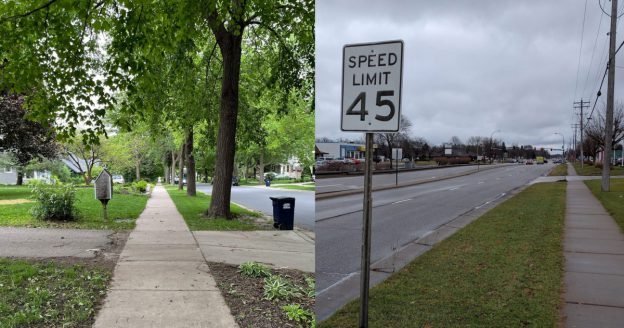The Top 3 Strong Towns Articles from 2023: Lauren's Picks
We’re ending the year by featuring some of our staff members’ favorite Strong Towns articles from 2023. Yesterday, Director of Membership and Development Norm Van Eeden Petersman shared his favorites, and we’ll also be hearing tomorrow from Ben Abramson. In the meantime, here are Director of Communications Lauren Ronnander’s picks!
1. “No City Should Rely Primarily on a Sales Tax for Funding,” by Charles Marohn
This is one of those classic Strong Towns essays—the kind that helps me think more deeply about how cities function and develop new understandings. Sales tax isn’t just a problematic funding mechanism for cities because it’s insufficient, or inefficient. Chuck reveals that it makes promoting the well-being of residents (or even the existence of residents) secondary to promoting sales, sales, sales; even ones that don’t improve people’s quality of life.
This is the kind of insight that kept me coming back to strongtowns.org every day before I joined the team, and the kind of insight that can help local advocates change the conversation about funding.
2. “Cutting Corners,” by Edward Erfurt
This quick, easy analysis of a problematic intersection is so, so powerful. Once Edward identifies how sweeping curbs make it difficult for people to safely travel, the solution practically suggests itself: use some paint, or a few cones, or whatever you have lying around to narrow the curb radius! This commentary is short, sweet, and shareable, just perfect for quickly changing the way people see their streets.
3. “If We Want a Shift to Walking, We Need To Prioritize Dignity,” by Sean Hayford Oleary
I’ve never really “got” what people mean when they use the word “dignity.” I thought it was one of those words that is used when people don’t quite know how to encapsulate a set of values. For one person, it could mean “respect” and for another it could mean “grace,” and so on. This essay by Sean Hayford Oleary brought the word into focus.
He cleverly posits that “dignity” can be measured by how others perceive you. If someone wonders what ill fate has befallen you when they see you walking somewhere, the transportation system doesn’t provide dignity for those who are walking. If someone sees you walking and thinks, “Oh, there’s so-and-so, out for a lovely walk on this lovely afternoon,” then your walk is dignified.
And further, Hayward Oleary details what factors go into making the walking experience a dignified one. It’s many of the little things that Strong Towns encourages transportation designers keep in mind when creating multimodal spaces.







Lauren Ronnander, the Director of Communications for Strong Towns, is an actual idealist who loves making things and double-spacing the end of sentences. Before joining the Strong Towns team in 2020, she worked as a journalist and an editor. She lives with her husband and an almost uncountable number of animals (including cats, dogs, sheep, chickens, and rabbits) in a super-awesome neighborhood in the American Midwest. Her experience in the Alaska Bush, downtown living in an up-and-coming Midwestern city, and now residing in a rural Chippewa Valley, Wisconsin, community has provided her with precious insight into the many ways our places can grow stronger.
Are you a member of the media and want to talk about Strong Towns? Email Lauren at [email protected].